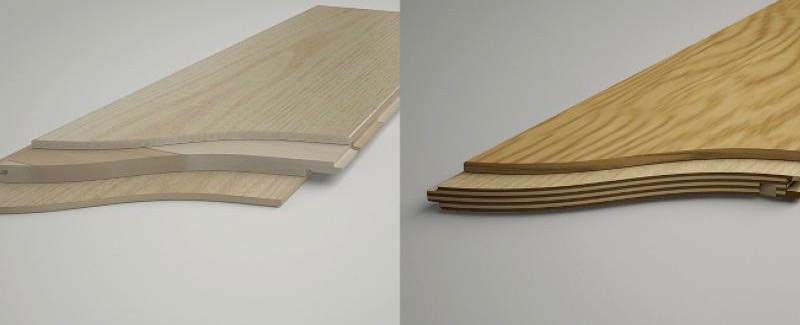Blog Articles
Multiply vs 3 ply wood flooring
Is multi-ply engineered wood really better than three-ply?
Well, the short answer is no. At least, there is no real technical proof that it is. Most suppliers stocking a multi-ply engineered wood flooring will tell you that multi-ply wins hands down and without a shadow of a doubt. But to the contrary, there must be a reason why most Central European factories are producing exclusively three-ply boards which they export all over the globe, mustn’t there?
So, let’s take a step back.
As the respective names suggest, three-ply engineered wooden flooring is made up of three layers of board glued together and placed under massive pressure to condense and solidify the board. Multi-ply engineered wooden flooring contains four or more layers (up to twelve) which can sometimes be cross-hatched. The layers are also glued and placed under extreme pressure to create a solid structure. Both three-ply and multi-ply are manufactured with a click or tongue and groove system to allow for easy, hassle-free fitting. Three-ply often comes at a lower cost than multi-ply owing to the less time taken in construction, but ultimately both are made from solid wood that is glued together and placed under pressure and both types are equipped with a tongue and groove or click system.
Our recommendation is to understand the quality of each of the elements when assessing whether a multi-ply or a three-ply engineered wood floor is most suitable for your particular application.
- Consider the quality and thickness of the top layer: The quality and the thickness of the top layer will make a huge difference to the look and finish of your floor and contribute to its long-lasting nature. Choose an engineered floor with strong hardwood top layer, preferably one that is harvested from a sustainable forest.
- Look at the quality of the wood used in the creation of the board: Not all wood is created equal. Some wood is harder and more durable than other wood. Ask what wood forms the top, middle and bottom layers of the planks and do some research on its quality and expected durability.
- Understand the quality of the adhesive used to stick the layers together: This may be slightly trickier to inquire about, but a quick internet search should yield positive, or negative reviews about the product you are considering. It’s also important to understand how the adhesive impacts your indoor air quality.
- Consider the locking system: Choose a patented locking system that has been well-designed by a well-known brand and you will be able to rest assured that your tongue and groove system will not fail you in years to come.
- Choose a reputable supplier: Purchase your engineered flooring from a company that has a proven track record in respect of honouring their warranties. Finfloor, for example, has outlived its original warranties and continues to source and supply only the highest quality products from brands that are internationally recognised and approved.


